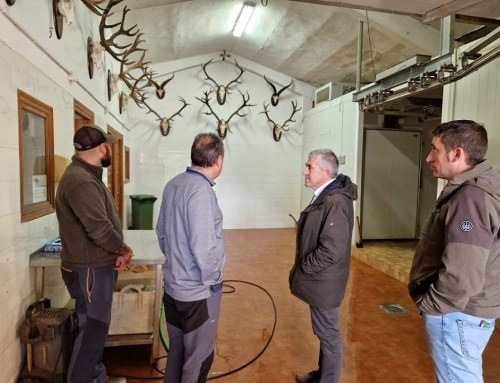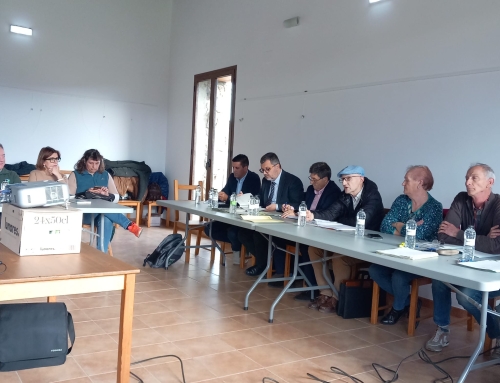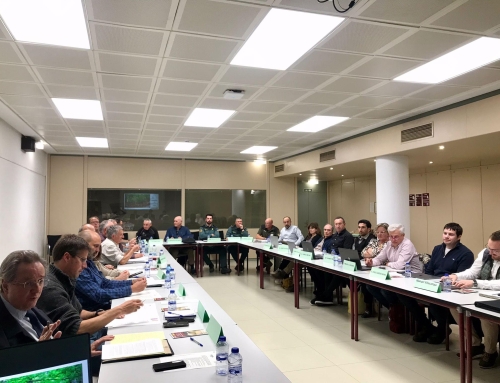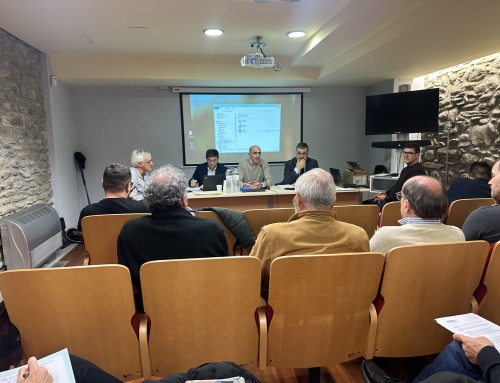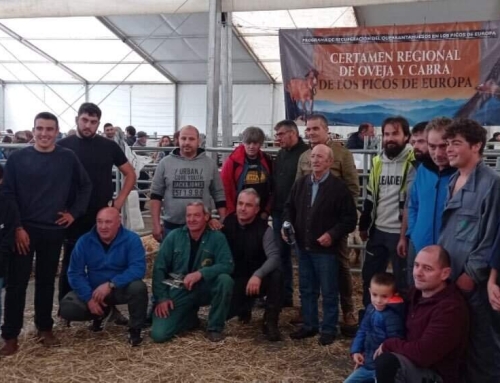
The Government’s green light intensifies the controversy over the most powerful clean energy macro-project in Spain.
The construction of 125 wind turbines of 200 meters in Teruel is welcomed by mayors who see it as a salvation plank and criticisms of citizen platforms for the loss of biodiversity The controversy is looming ever stronger over the energy megaproject known as Cluster Maestrazgo, in Teruel and Castellón, which will raise 125 huge wind turbines over 200 meters high, and which will be the most powerful in Spain.
The approval of the construction project by the Government this August, the last administrative step, has provoked the response of the detractors -infavor of green energy, but not at the environmental price they say this environment will pay-.
They warn that two million trees could be felled, in addition to the fact that they estimate that 84 wind turbines invade Natura 2000 Network zones (European Union biodiversity conservation areas).
In March they filed an administrative lawsuit with the Madrid High Court of Justice.
“We don’t see any other course of action,” they justified.
The magnitude of the amount of vegetation that could disappear has caused a storm and the immediate response of the developer, the Danish investment fund Copenhaguen Infrastructure Partners (CIP), which reduces the amount to 98,000 specimens, and clarifies that they are obliged to plant at least the same amount. Who is right? The truth is that the figure does not appear in any official document and is very complicated to determine because it depends on the size of the trees and the density existing in each area.
The Ministry for Ecological Transition does not clarify it either, and refers to the Environmental Impact Statement (EIS) of December 2022, which specifies that it will affect 488 hectares of vegetation.
In addition, authorization from the autonomous community is required to cut the specimens.
What the company is doing is extrapolating the tree densities of the coniferous and deciduous forests of Maestrazgo to the 140 hectares of this type affected.
But the groups fighting against the infrastructure raise the area to be deforested to 1,000 hectares by adding roads, forest tracks and electricity evacuation routes.
Ernesto Romeo, from Teruel Existe, speaks of obscurantism: “We have had to draw up a plan and compare the location of the wind turbines to know their real impact on the Natura Network, after the project and the positions of some of them were modified, because they only gave us some coordinates and in separate files. This is a way of hindering citizen participation”.
Ministerial sources report that they cannot give that information for legal security.
“It is incredible that there were these changes without a new environmental assessment,” adds Romeo.
The project, which will occupy 995 hectares in total and is divided into 20 wind farms and two photovoltaic plants, will generate energy to supply 570,000 homes.
Initially there were to be 161 wind turbines, but the developer had to modify the plans due to environmental problems and reduce them to 125.
They are located in the provinces of Teruel and Castellón, the latter being affected by the evacuation line, which transports the electricity to the Morella electrical substation.
“It is true that two parks have been eliminated because of their proximity to areas of special protection for birds (Zepa) and that some have been moved because of interference with Egyptian vulture nests, but many have remained within the Natura 2000 Network,” explains Javier Oquendo, of the Platform in favor of the landscapes of Teruel.
This group also signed the lawsuit filed against the State. Mayors in favor The mayors of the towns of the Maestrazgo region of Teruel are, however, in favor of the initiative.
Alba Lucea, independent mayoress of Mosqueruela, a town of 500 inhabitants where 45 windmills are to be erected, explains, without showing any doubt, that she is in favor of the wind farms.
“There will be no environmental impact, of course we will have a visual impact, because now the mountains are clean, it is obvious, but we must prioritize,” she says.
The small town, with an annual budget of one million euros, is going to receive 20 million at the beginning from construction and works taxes.
Later, Mosqueruela will double its annual budget with a million more to be paid by the company as a fee for 30 years.
“Pines will be cut down, but it is already necessary because we are starting to have pest problems and it is due to overpopulation, but it will not be razed, it will not be two million, as they say,” he clarifies.
Lucea sees it as “an opportunity” for his neighbors to opt for the same services as those of localities with a larger population. He is thinking of having a cab service to bring the neighbors to the hospital, renovating the old people’s home, creating housing…
In addition to this rain of millions, people who have a mill on their land will receive 11,000 euros per year.
At present, the village lives mainly from livestock farming.
One of these cattle ranchers is Joaquín Gargallo, also a member of Teruel Existe.
“Let’s see if the trees won’t let us see the forest,” he says of the controversy over the number of trees to be cut down.
Together with his brother, he looks after 260 cows that graze extensively, and knows the land inch by inch.
“It’s not only that, but the soil and the biodiversity in it will be lost,” he says. Choosing more degraded areas Juan Antonio Gil, secretary of the Foundation for the Conservation of the Bearded Vulture (FCQ), is not surprised by the position of mayors and landowners.
“I can understand them, there is a lot of money involved and it is very greedy,” he says.
Another question is the position of the State, “which is the one that should put things in order”.
He has no doubt that renewable energy plants should be built, “but in areas with no environmental value, not like this one, with a large proportion of the land protected by Red Natura 2000″.
The FCQ is developing a European project for the reintroduction of the endangered bearded vulture, and decided a year ago to suspend the release of specimens in the Sierra del Maestrazgo due to the high risk of collision and death involved in the project.
They know what they are talking about, in June of this year, Masia, one of the specimens they had reintroduced, died due to a collision with a wind turbine in the Refoyas wind complex, located between Castellón and Teruel.
“For example, Aragón is going to invest some 30 million euros in the union of the ski resorts of Candanchú and Astún, and there are European funds that could have arrived here,” he says.
The Danish investment fund, which is planning a total investment of 1,000 million euros in the macro-complex, clarifies that protecting birdlife is one of its priorities.
“The wind turbines incorporate state-of-the-art bird detection systems based on 3D radar technologies, high-resolution machine vision and Artificial Intelligence that will enable their shutdown in case of risk of collision,” they argue.
The controversy extends to Castellón.
There the problem is the electricity evacuation line that will cross the towns of Portell, Cinctorres and Morella.
“The line affects a ZEPA [Zona de Especial Protección de Aves] and Red Natura 2000, the company says it is not so because another 132 kV line already runs through there, the problem is that they would put 400 kV more,” explains Miguel Angel Troncho, a member of the platform.
“What they are doing is installing one line and when they finish it, they will dismantle the other, which means that there will be deforestation, and there is a bit of everything there, old oaks, scrubland and it is an area of truffle oak.”
The mayor of Morella, Bernabé Sangüesa, of Independents per Morella, maintains that it is a very negative project.
“The line passes about 80 meters from inhabited houses and that can not be allowed, according to European regulations should be 500 meters,” he said. As for the 3,547 jobs that the company claims will be created, he replied that “there will be jobs when it is built, but today’s technology allows wind turbines to be fully computerized, it is not like before, which were more mechanical; now sending a technician is enough”.
Source: https://elpais.com/clima-y-medio-ambiente/2024-08-27/la-luz-verde-del-gobierno-recrudece-la-polemica-por-el-macroproyecto-de-energia-limpia-con-mas-potencia-de-espana.html

